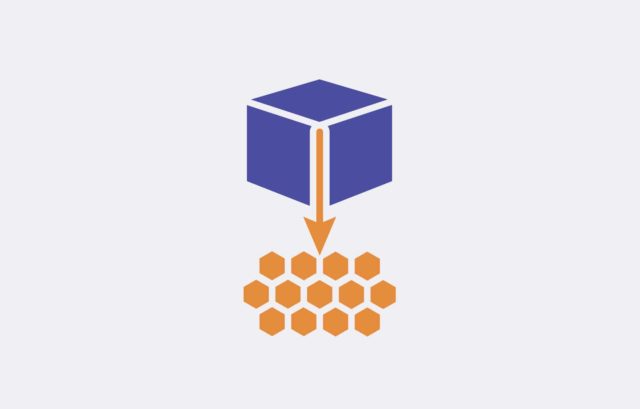The technological revolution has created immense strides in every field and posed challenges requiring businesses to innovate and modernize to match. Legacy systems have become obsolete, reducing performance and preventing enterprises from innovating or scaling. Upgrading and maintaining the system-wide become impossible or extremely difficult and expensive because applications are no longer backed by vendors and the system does not have enough capability to take on new features. A proposed solution is to divide the monolith into small modules, proceed to expand horizontally and remove the parts that are no longer suitable while keeping or modernizing legacy modules by adopting microservices-based architecture. With this approach, businesses can reduce cost stress and recovery risks compared to complete replacement. One of the most effective ways to deploy microservices is on AWS (Amazon Web Services). The following article aims to give you a specific look at AWS microservices, its benefits, and most importantly, the best method of implementing microservices architecture with AWS suggested by the top leading market experts.
Table of Contents
What are microservices?
Microservices are simply understood as independent pieces of software that provide specific functions, run separately, and communicate with each other through explicit APIs. Each service is developed from its source code, and data and behaves differently from other microservices. Therefore, microservice-based software can be constructed in multiple languages, and more flexible in management and updates, able to scale easily, quickly, and cost-effectively.
Speaking of microservices, let’s take a look at the evolution of this superior new approach in relation to the monolithic application development approach.
Monolithic Application
The essence of a monolithic application is framed into a single unit that runs on a lone set of source codes for the entire system and closely interlinked and interdependent processes. Any component change will affect the whole system, so the application requires to be redeployed completely, in case of scaling or expansion. Worst of all, if an error occurs, it can bring down the entire application. Furthermore, single source code becomes complex over time. Updating or adding features causes a burden of time, and effort and also risks of errors. Developers, need to understand the whole system if they want to make any changes, and it is difficult to manage a large project with interdependent elements.
Microservices application
In contrast to the monolithic software architecture, microservices allow all the small modules to be decoupled from each other with independent processes and particular codes, with different stacks for each. Scaling, updates, or reboots can be done discretely without affecting other components. Therefore, microservice code can be broken down into many other microservices to continue to grow when it becomes overloaded without affecting the overall performance of the application. Introducing new features can be done quickly and easily through API gateways to the cloud. As a result, your products are always on-trend and can even dominate the market trends. Developers recognize that the microservices approach allows them to manage projects piecemeal easier and faster, as several small teams can focus on working on individual microservices before bringing them together into a finished product.
Benefits of using the AWS microservices approach
The microservices approach is perfect for enterprises and cloud-based application developers.
1. Deployability
Each microservice can run separately, making it very simple to update or make any changes at any time or scale unconventionally without affecting system-wide processes and performance, and other microservices. Each module is allowed to be developed with the particular technology deemed best for its functionality by different development teams, resulting in a faster overall deployment speed and greater efficiency.
2. Scalability
The microservices model allows businesses to allocate resources to the features that need to increase capacity to serve their specific business needs, as well as add new functions to the system to meet customer needs without hindrance. This maintains system availability and relevance over the long term, regardless of scale changes, and maximizes cost-effectiveness for the business.
3. Fault isolation and system recovery
The modularity of the microservices architecture completely eliminates the impact of the failure of one module on the entire application. When an error occurs, the fault module is disassembled and corrected while the rest of the product components can still function normally. For example, the payment gateway is malfunctioning, you just need to go to the payment module and fix it. Improvements and upgrades in other services can also be performed without waiting time or being interrupted by a failure in one microservice.
4. Code Reusability
Microservices run on unconnected source codes so they can be reused for multiple purposes and as a building block for the same or similar functionality across many different products. This capability allows businesses to save time and resources, to focus on new and higher potential features.
Implementing microservices architecture with AWS
To deploy microservices on AWS, you need to go through a plan of the following steps:
Initialize the repositories
Let’s do the creation of separate CI/CD repositories and pipelines for microservices using AWS CodeCommit.
Building code with AWS CodeBuild
CodeDeploy helps you create Docker containers
AWS ECR receives Docker images
Set up communication
The communication setup for microservices varies by project and domain.
Most interactive microservices are event-based. Systems using these types of microservices are easily extended because they do not interact directly with each other but communicate through AWS SQS – the midway message broker.
For services that expose REST WebAPI, they can be called as well as react to events occurring in other services.
Database Setup
NoSQL databases and relational databases are used, but a particular microservice can only perform tasks on one type, depending on its function.
When deployed on AWS, you can use Aurora data storage for relational databases and DynamoDB for NoSQL. This allows your data to be more available and more secure in the event of an accident in the data center.
Other features can also be considered using for file hosting like Load Balancer, Root DNS, or S3, depending on the specific task of the microservices and the requirements of the project.








